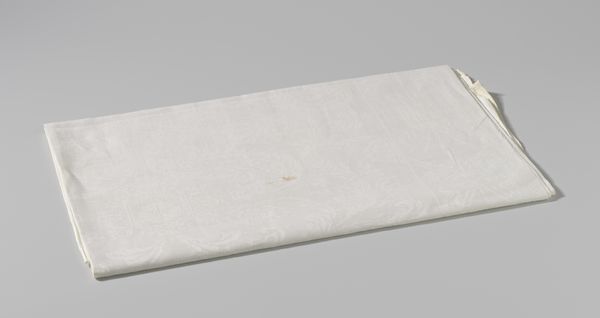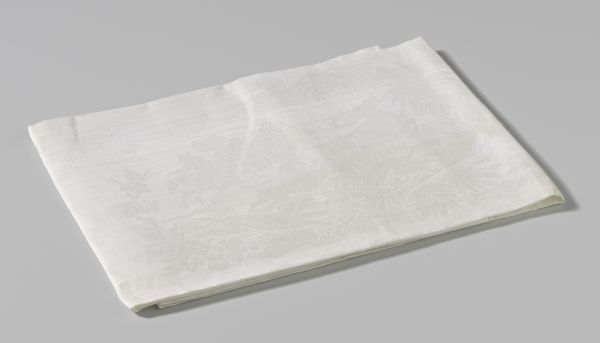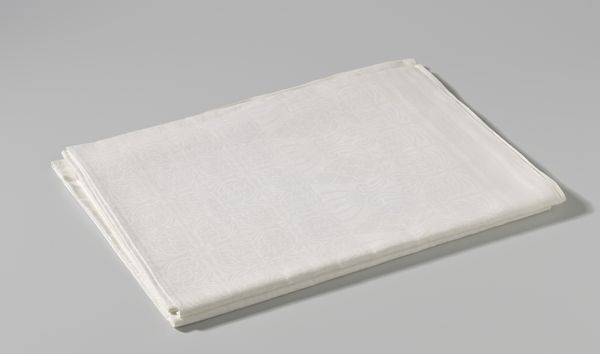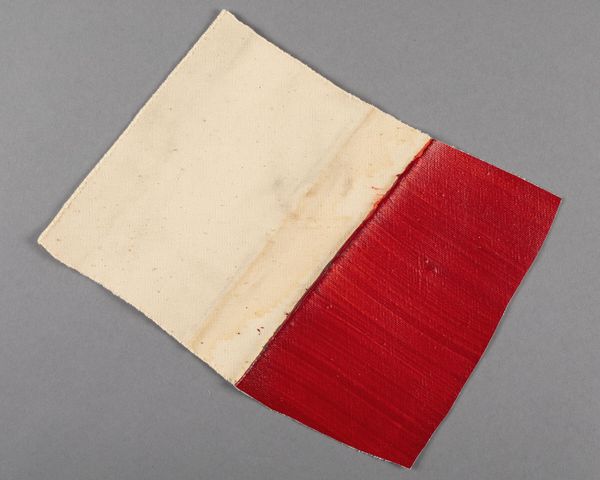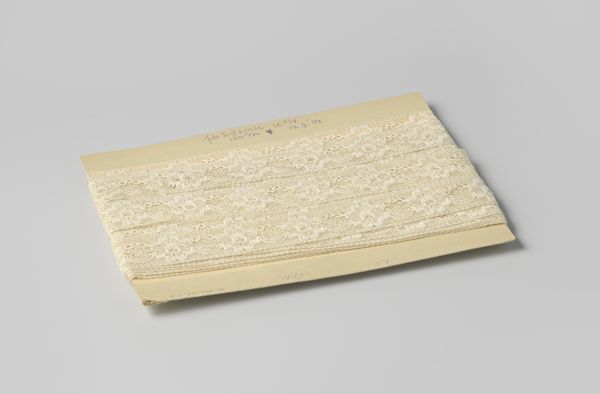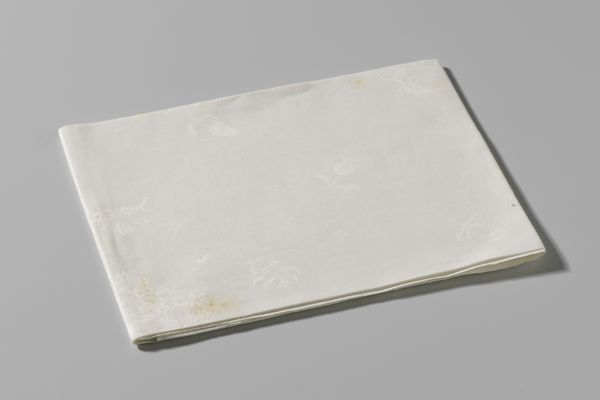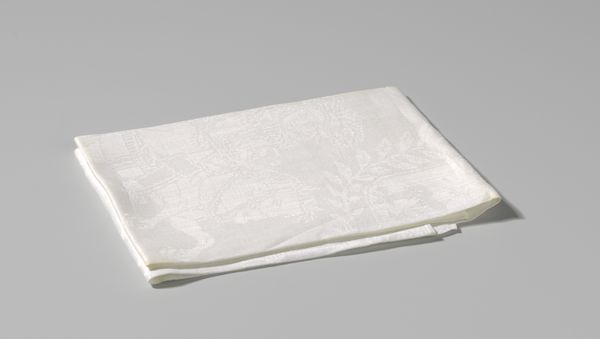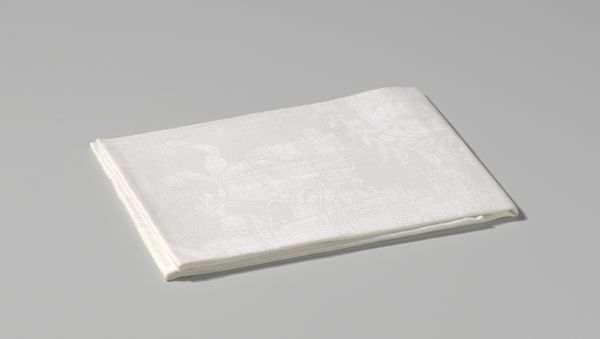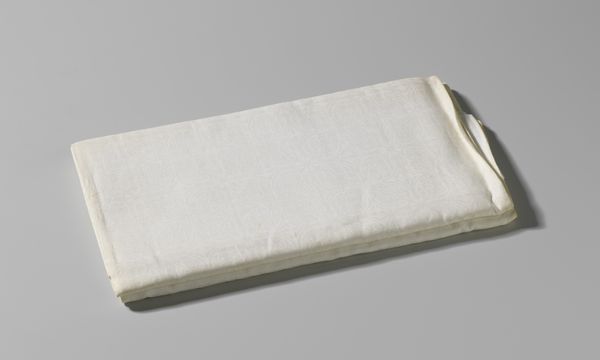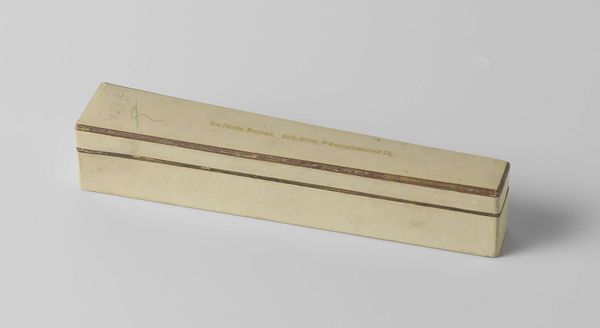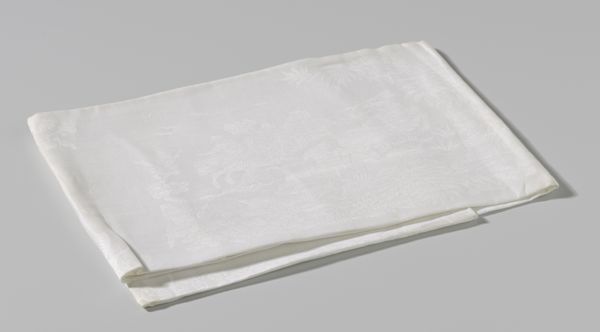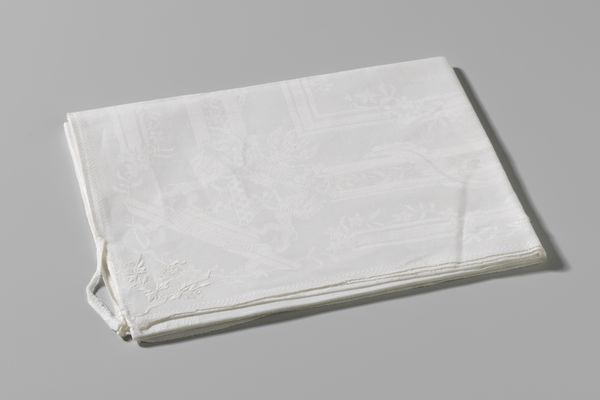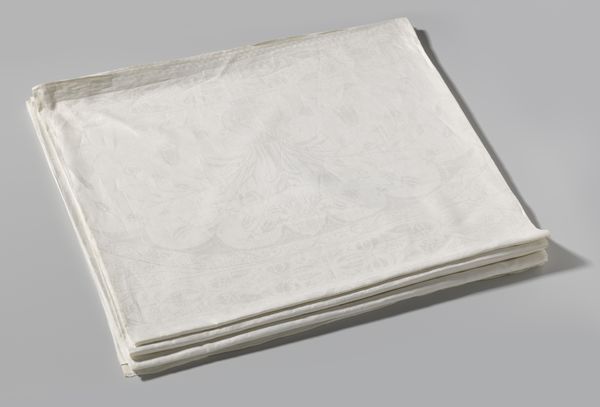
mixed-media
#
mixed-media
Dimensions: length 45.8 cm, width 58.7 cm
Copyright: Rijks Museum: Open Domain
Editor: Here we have what's described as a "Vloeiblad van het bureau van Willem Drees" -- a blotter from the desk of Willem Drees -- created sometime between 1910 and 1980. It looks like a mixed-media piece with a red border encompassing a light green surface. It feels so…stark, yet intimate. What symbols or narratives do you think this unassuming object carries? Curator: This isn't just an object, but a landscape of quiet power. Think of what a blotter represents: absorbing the overflow, the excess ink – almost like soaking up the actions and intentions, the thoughts, of the person using it. And the choice of red – the color of passion, warning, but also authority. Editor: That's interesting. Authority. But it's also worn and faded. Does that soften the image? Curator: The wear is key. This isn't pristine, but touched, used. It bears the marks of a life dedicated to, presumably, administration or politics given it's Willem Drees' desk. It speaks to the unseen labor, the drafting and redrafting, the corrections that underpin monumental decisions. The green might be reminiscent of pastoral ideals of the countryside that is being fought over by politics. Does that colour strike any symbolic tone with you? Editor: It reminds me of government documents, a muted green. It doesn’t feel as hopeful as a brighter green. Curator: Exactly! It takes on the aura of governmental procedures and historical significance. We sense a transition from the idealistic green to a muted, authoritative tone. What story does that contrast reveal to you? Editor: That the ideal meets with the administrative details? Maybe a necessary compromise when governing? Curator: Perhaps. The piece isn't grandstanding; it speaks quietly of service. We gain a view on this public figure, this political individual, Drees, as a thinking, writing, creating entity. Editor: It is powerful to consider the narratives held within everyday objects like this. It bridges the gap between historical figures and daily realities. Curator: Exactly. Through material culture, we touch the pulse of history, of the personal narratives etched into objects.
Comments
No comments
Be the first to comment and join the conversation on the ultimate creative platform.
